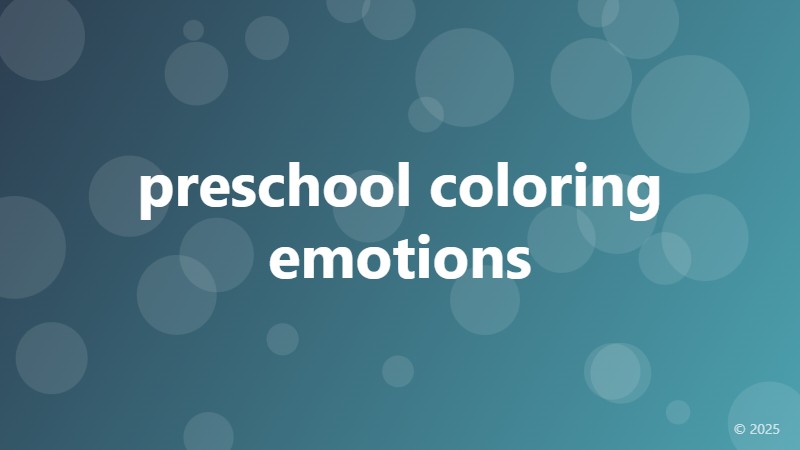preschool coloring emotions

Unlocking Emotional Intelligence through Preschool Coloring Emotions
As a parent or educator, you may have wondered how to introduce young children to the complex world of emotions. One effective way to do this is through preschool coloring emotions activities. By using colors to express and identify emotions, children can develop essential social skills, emotional intelligence, and self-awareness from a tender age.
Why Emotions Matter in Preschool Education
Emotional intelligence plays a critical role in a child's overall development. It helps them navigate social situations, build relationships, and regulate their feelings. Preschoolers who understand and can identify emotions are better equipped to manage their own emotions, empathize with others, and develop healthy relationships.
How Preschool Coloring Emotions Works
Preschool coloring emotions activities involve using different colors to represent various emotions. For example, red for anger, blue for sadness, and yellow for happiness. Children are presented with a scenario or emotion, and then asked to color a picture accordingly. This interactive approach helps children connect emotions with colors, making it easier for them to recognize and express their feelings.
Benefits of Preschool Coloring Emotions
Preschool coloring emotions offers a range of benefits, including:
Improved emotional intelligence: By identifying and expressing emotions, children develop a deeper understanding of their feelings and those of others.
Enhanced self-awareness: Children learn to recognize and label their emotions, leading to better self-regulation and emotional control.
Developed empathy: Preschool coloring emotions encourages children to consider the feelings of others, fostering empathy and compassion.
Strengthened social skills: By discussing and sharing emotions, children develop essential social skills, such as communication, active listening, and conflict resolution.
Tips for Implementing Preschool Coloring Emotions
To get the most out of preschool coloring emotions activities, follow these tips:
Keep it fun and engaging: Use colorful pictures, stories, and scenarios to capture children's attention and encourage participation.
Use real-life examples: Relate emotions to everyday situations, making it easier for children to understand and connect with the emotions.
Encourage discussion: Ask open-ended questions, and encourage children to share their thoughts and feelings about the emotions they're exploring.
Make it a routine: Incorporate preschool coloring emotions into your daily or weekly routine, ensuring consistency and progress.
By incorporating preschool coloring emotions into your teaching or parenting approach, you can provide young children with a valuable tool for emotional intelligence, social skills, and self-awareness. Watch them grow into empathetic, confident, and emotionally intelligent individuals.